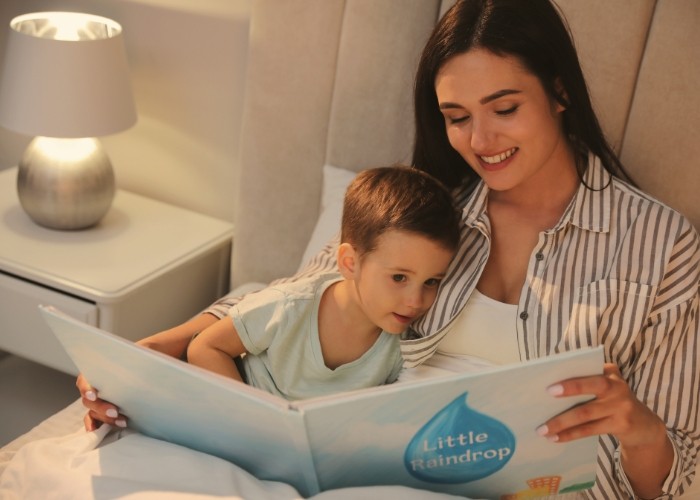
Treating Sleep Apnea in Toddlers: A Guide for Parents and Caregivers
SleepQuest
Welcome to SleepQuest. We are a leading provider of sleep apnea diagnosis and treatment.
Pediatric sleep apnea causes pauses in breathing when your toddler is sleeping. As with adults, the most common form in children is obstructive sleep apnea, which results from narrow or blocked airways.
Treating sleep apnea in toddlers can depend on the cause and the severity of the disorder. However, before considering how you treat sleep apnea in toddlers, let’s take a closer look at the symptoms.
Recognizing the Symptoms of Pediatric Sleep Apnea
A review in 2014 reported that up to 5% of children experience obstructive sleep apnea. Symptoms for parents and caregivers to look out for include:
Loud snoring can often be the first recognizable sign of an airway obstruction, although not every toddler with sleep apnea will snore. Therefore, if your toddler is displaying any of the symptoms of sleep apnea you should consult a doctor.
How Do You Treat Sleep Apnea in Toddlers?
Treating sleep apnea in toddlers is not a one-size-fits-all solution and will depend on contributing risk factors. For a toddler with mild obstructive sleep apnea, where the amount of breathing pauses per hour is quite low, it may be decided to see if they outgrow the disorder at first.
However, untreated sleep apnea poses various risks. Therefore, the following treatment options may be recommended for treating sleep apnea in toddlers.
Adenotonsillectomy?
A common cause of pediatric sleep apnea is enlarged adenoids or tonsils. If your toddler is experiencing moderate to severe obstructive sleep apnea, your child’s doctor may recommend surgery to remove the adenoids and tonsils.
This is called an adenotonsillectomy and can help open the airways to improve breathing. Sometimes removing just the adenoids may be sufficient, for example, if a child has small tonsils.?
A 2014 review reported that removing the adenoids and tonsils reduces the symptoms of sleep apnea in children anywhere between 27-79%.
Medicines
Medicines could be prescribed by a doctor to help ease nasal congestion and reduce obstructive sleep apnea symptoms in toddlers with a mild degree of the disorder. This could be a topical nasal saline such as fluticasone or budesonide.
The initial prescription will tend to cover a period of up to three months, after which your doctor can evaluate its effectiveness and whether they need to reassess the treatment required.
CPAP
CPAP stands for continuous positive airway pressure and involves a device delivering pressurized air through a mask worn overnight. The pressurized air prevents the airways from collapsing.
领英推荐
CPAP will generally be considered for children with severe sleep apnea if other treatments like medicine or the removal of the adenoids and tonsils have proven ineffective.
The mask seal?is crucial for effective treatment using CPAP as it ensures all the air is directed to the airways and that there is no leakage of air from the mask. As your toddler grows, they will need to be refitted with masks to ensure a correct fit and seal.
Oral Appliances
As with adults, not every child will be able to adapt to wearing a CPAP mask over their mouth and nose every night. For children who struggle to comply with CPAP, an oral appliance can be a solution.
An oral appliance is designed to move the lower jaw forward or to prevent the tongue from falling back to block the airways. They can also be used to expand the palate and nasal passages to improve airflow.
Oral appliances are not as effective in reducing sleep apnea symptoms as CPAP. However, your child may not be complying with CPAP, such as removing the mask at night. In these instances, they may be more likely to stick with an oral appliance every night and continue to gain benefits.
Weight Loss
Obesity can be a contributing risk factor for obstructive sleep apnea. Excess tissues in and around the throat are pulled down as the muscles relax when sleeping to obstruct the airways.
Your doctor will work with you to form a suitable weight loss plan?for your child. This could include dietary changes and exercise to promote a healthier lifestyle.
Weight loss can lead to reduced sleep apnea symptoms, and continued weight management should prevent their return. Lifestyle changes geared to weight loss may be used alongside other treatment methods.
Avoid Allergens
Allergies can worsen the impact of obstructive sleep apnea through additional nasal congestion. Therefore, if your child suffers from allergies, it is important to try and limit their exposure to potential allergens as well as pollutants and tobacco smoke.
Medication can help ease congestion resulting from allergies, but preventing exposure to the triggers of their allergy should be the first aim.
Why Treating Sleep Apnea in Toddlers Is Important
The quality of your child’s life can be severely impacted if sleep apnea is left untreated. The daytime fatigue from disturbed sleep can affect their attention and concentration levels at school, hindering their education.
Without treatment, sleep apnea can negatively impact a child’s social skills. They can become hyperactive, and as the symptoms are similar, they could be diagnosed with attention deficit hyperactivity disorder (ADHD) instead.
There can also be a physical toll to untreated sleep apnea as it can hinder growth and cause heart problems. Sleep apnea is linked to high blood pressure too, which places your child at an increased risk of heart disease and stroke as an adult.
Although pediatric sleep apnea can worsen if left untreated, the available treatments will reduce or eliminate the symptoms of this disorder for many children. If your child displays any of the symptoms of sleep apnea, consult with a healthcare professional.